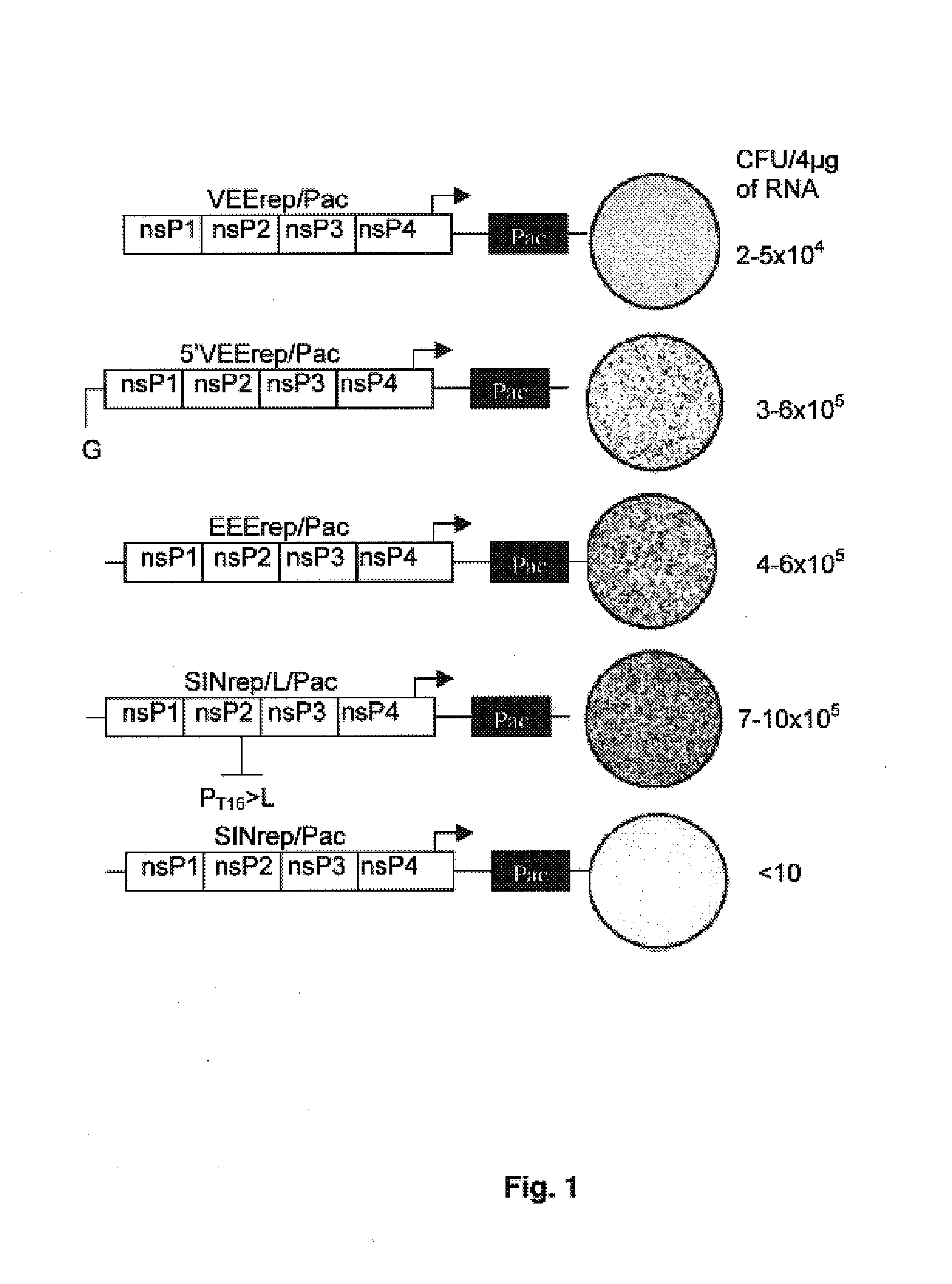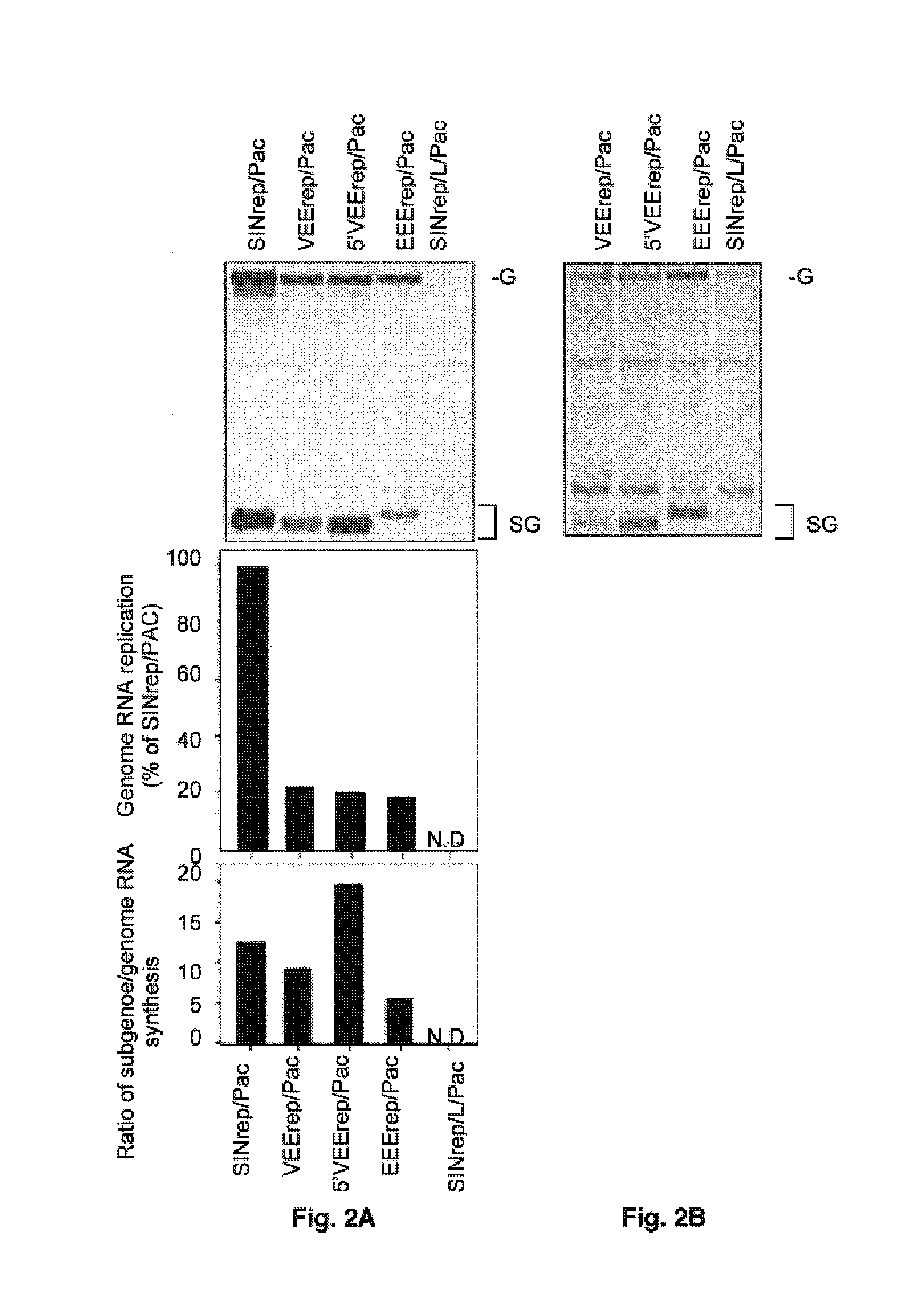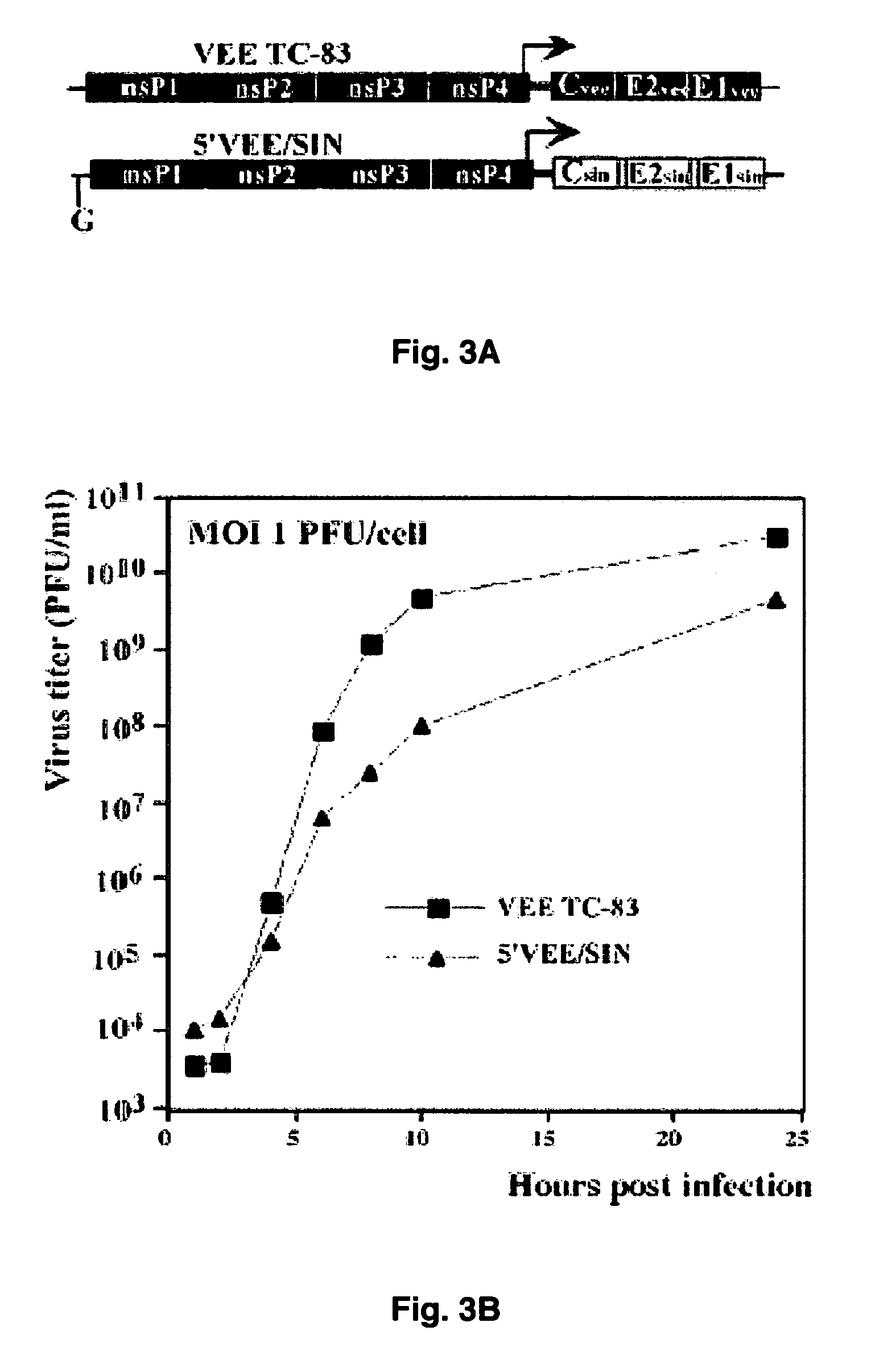Venezuelan equine encephalitis virus replicons with adaptive mutations in the genome and uses thereof
a technology of adaptive mutation, which is applied in the field of recombinant dna technology, can solve the problems of cytotoxicity and/or sensitivity of ifn, inability to achieve long-term expression, and limited number of cell lines in which venezuelan equine encephalitis virus replicons could persist, etc., and achieve the effect of reducing the cytopathic
- Summary
- Abstract
- Description
- Claims
- Application Information
AI Technical Summary
Benefits of technology
Problems solved by technology
Method used
Image
Examples
example 1
Materials and Methods
[0054]Cell Cultures
[0055]BHK-21 cells were provided by Paul Olivo (Washington University, St. Louis, Mo.). They were maintained at 37° C. in alpha minimum essential medium (αMEM) supplemented with 10% fetal bovine serum (FBS) and vitamins.
Plasmid Constructs
[0056]The high-copy-number plasmid encoding the EEE nonstructural proteins from the genome of North American strain Florida 91 was provided by Michael Parker (U.S. Army Medical Research Institute for Infectious Diseases). The high-copy-number plasmid carrying the VEE TC-83 strain genome was described elsewhere (5). TC-83 is a live attenuated vaccine strain of VEE that is available for vaccination of laboratory workers and military personnel. It was developed by serial passaging of the virulent, subtype IAB Trinidad donkey (TRD) Venezuelan equine encephalitis virus strain in cell culture (7). SINrep / L / Pac and SINrep / Pac replicon-encoding plasmids were described elsewhere (8). They were previously referred to as...
example 2
Venezuelan Equine Encephalitis Virus Replicons are Less Cytopathic Compared to Sindbis Virus-Based Constructs
[0085]In order to compare the in vitro replication of VEE and EEE replicons with similar SIN-based (SINrep) constructs (10), cDNA copies of both replicons were created in low-copy-number plasmids. The use of low-copy-number plasmids made replicon- and entire viral genome-coding plasmids stable during propagation in Escherichia coli. Original cloned genetic material from the Venezuelan equine encephalitis virus TC-83 strain and EEE North American strain Florida 91 was recloned under control of the SP6 promoters into a pToto1101 plasmid to replace the SIN genome. The final constructs contained the 5′ and 3′ cis-acting elements required for replication, the nsP1 to nsP4 genes and the selectable marker Pac gene cloned under control of viral subgenomic promoters (FIG. 1).
[0086]Two variants of the VEE replicon were generated. One of these (VEErep / Pac) contained the TC-83-derived 5′...
example 3
Replication of Venezuelan Equine Encephalitis Virus-Based Replicons
[0090]To compare the efficiencies of RNA replication, 4 μg of each replicon (5′VEErep / Pac, VEErep / Pac, EEErep / Pac, SINrep / Pac, and SINrep / L / Pac) was transfected into BHK-21 cells. The RNA replication and transcription of the subgenomic, Pac-encoding RNA was tested by metabolic RNA labeling with [3H]uridine in the presence of dactinomycin, both between 4 and 8 h posttransfection and after a few passages of the Purr cells. RNAs were isolated, denatured, resolved by gel electrophoresis, and detected by autoradiography.
[0091]Venezuelan equine encephalitis virus and EEE replicons demonstrated high levels of replication of the genome RNAs and transcription of the subgenomes (FIG. 2A) at between 4 and 8 h postelectroporation. At this time point, they replicated fivefold less efficiently than did SINrep / Pac but dramatically better than the noncytopathic SINrep / L / Pac, whose RNAs could be visualized only after 10-fold-longer e...
PUM
| Property | Measurement | Unit |
|---|---|---|
| volume | aaaaa | aaaaa |
| temperature | aaaaa | aaaaa |
| time | aaaaa | aaaaa |
Abstract
Description
Claims
Application Information
 Login to View More
Login to View More - R&D
- Intellectual Property
- Life Sciences
- Materials
- Tech Scout
- Unparalleled Data Quality
- Higher Quality Content
- 60% Fewer Hallucinations
Browse by: Latest US Patents, China's latest patents, Technical Efficacy Thesaurus, Application Domain, Technology Topic, Popular Technical Reports.
© 2025 PatSnap. All rights reserved.Legal|Privacy policy|Modern Slavery Act Transparency Statement|Sitemap|About US| Contact US: help@patsnap.com



